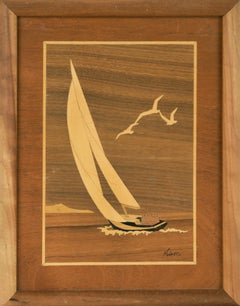Figurative Sculptures
20th Century Impressionist Figurative Sculptures
Bronze
21st Century and Contemporary American Impressionist Figurative Sculptures
Wood, Wood Panel
1670s American Impressionist Figurative Sculptures
Bronze
Early 2000s American Impressionist Figurative Sculptures
Bronze
Early 2000s American Impressionist Figurative Sculptures
Bronze
1940s Expressionist Figurative Sculptures
Limestone
Early 20th Century Expressionist Figurative Sculptures
Bronze
1990s Expressionist Figurative Sculptures
Ceramic
Early 2000s Impressionist Figurative Sculptures
Bronze
2010s Expressionist Figurative Sculptures
Sandstone, Bronze
1910s American Impressionist Figurative Sculptures
Bronze
1910s American Impressionist Figurative Sculptures
Bronze
1910s American Impressionist Figurative Sculptures
Bronze
2010s Expressionist Figurative Sculptures
Bronze
2010s Impressionist Figurative Sculptures
Stone
21st Century and Contemporary Expressionist Figurative Sculptures
Bronze
1930s Expressionist Figurative Sculptures
Bronze
2010s Impressionist Figurative Sculptures
Stone
2010s Expressionist Figurative Sculptures
Sandstone, Bronze
2010s Expressionist Figurative Sculptures
Bronze
2010s Impressionist Figurative Sculptures
Stone
2010s Expressionist Figurative Sculptures
Sandstone, Bronze
2010s Expressionist Figurative Sculptures
Sandstone, Bronze
2010s Expressionist Figurative Sculptures
Bronze
2010s Expressionist Figurative Sculptures
Bronze
20th Century Expressionist Figurative Sculptures
Ceramic, Paint, Glaze
20th Century Expressionist Figurative Sculptures
Bronze
20th Century Expressionist Figurative Sculptures
Bronze
2010s Impressionist Figurative Sculptures
Stone
20th Century Expressionist Figurative Sculptures
Bronze
20th Century Expressionist Figurative Sculptures
Bronze
1980s Impressionist Figurative Sculptures
Bronze
2010s Impressionist Figurative Sculptures
Bronze
2010s Impressionist Figurative Sculptures
Metal
2010s Expressionist Figurative Sculptures
Bronze
2010s Expressionist Figurative Sculptures
Bronze
2010s Expressionist Figurative Sculptures
Sandstone, Bronze
Mid-20th Century American Impressionist Figurative Sculptures
Wood, Paint
Mid-20th Century American Impressionist Figurative Sculptures
Wood, Paint
Early 2000s American Impressionist Figurative Sculptures
Bronze
Mid-20th Century American Impressionist Figurative Sculptures
Wood, Paint
Early 20th Century Expressionist Figurative Sculptures
Bronze
2010s Expressionist Figurative Sculptures
Sandstone, Bronze
2010s Expressionist Figurative Sculptures
Bronze
Mid-20th Century American Impressionist Figurative Sculptures
Wood, Paint
2010s American Impressionist Figurative Sculptures
Bronze
Mid-20th Century American Impressionist Figurative Sculptures
Wood, Paint
Mid-20th Century American Impressionist Figurative Sculptures
Paint, Wood
Mid-20th Century American Impressionist Figurative Sculptures
Wood, Paint
2010s American Impressionist Figurative Sculptures
Bronze
Mid-20th Century American Impressionist Figurative Sculptures
Wood, Paint
Early 20th Century Impressionist Figurative Sculptures
Marble, Bronze
2010s Impressionist Figurative Sculptures
Bronze
1870s Impressionist Figurative Sculptures
Bronze
2010s Impressionist Figurative Sculptures
Bronze
2010s Impressionist Figurative Sculptures
Bronze
2010s Impressionist Figurative Sculptures
Bronze
2010s Impressionist Figurative Sculptures
Bronze
Bring Figurative Sculptures into Your Home
Figurative sculptures mix reality and imagination, with the most common muse being the human body. Animals are also inspirations for these sculptures, along with forms found in nature.
While figurative sculpture dates back over 35,000 years, the term came into popularity in the 20th century to distinguish it from abstract art. It was aligned with the Expressionist movement in that many of its artists portrayed reality but in a nonnaturalistic and emotional way. In the 1940s, Alberto Giacometti — a Swiss-born artist who was interested in African art, Cubism and Surrealism — created now-iconic representational sculptures of the human figure, and after World War II, figurative sculpture as a movement continued to flourish in Europe.
Lucian Freud and Francis Bacon were some of the leading figurative artists during this period. Artists like Jeff Koons and Maurizio Cattelan propelled the evolution of figurative sculpture into the 21st century.
Figurative sculptures can be whimsical, uncanny and beautiful. Their materials range from stone and wood to metal and delicate ceramics. Even in smaller sizes, the sculptures make bold statements. A bronze sculpture by Salvador Dalí enhances a room; a statuesque bull by Jacques Owczarek depicts strength with its broad chest while its thin legs speak of fragility. Figurative sculptures allow viewers to see what is possible when life is reimagined.
Browse 1stDibs for an extensive collection of figurative sculptures and find the next addition to your collection.

